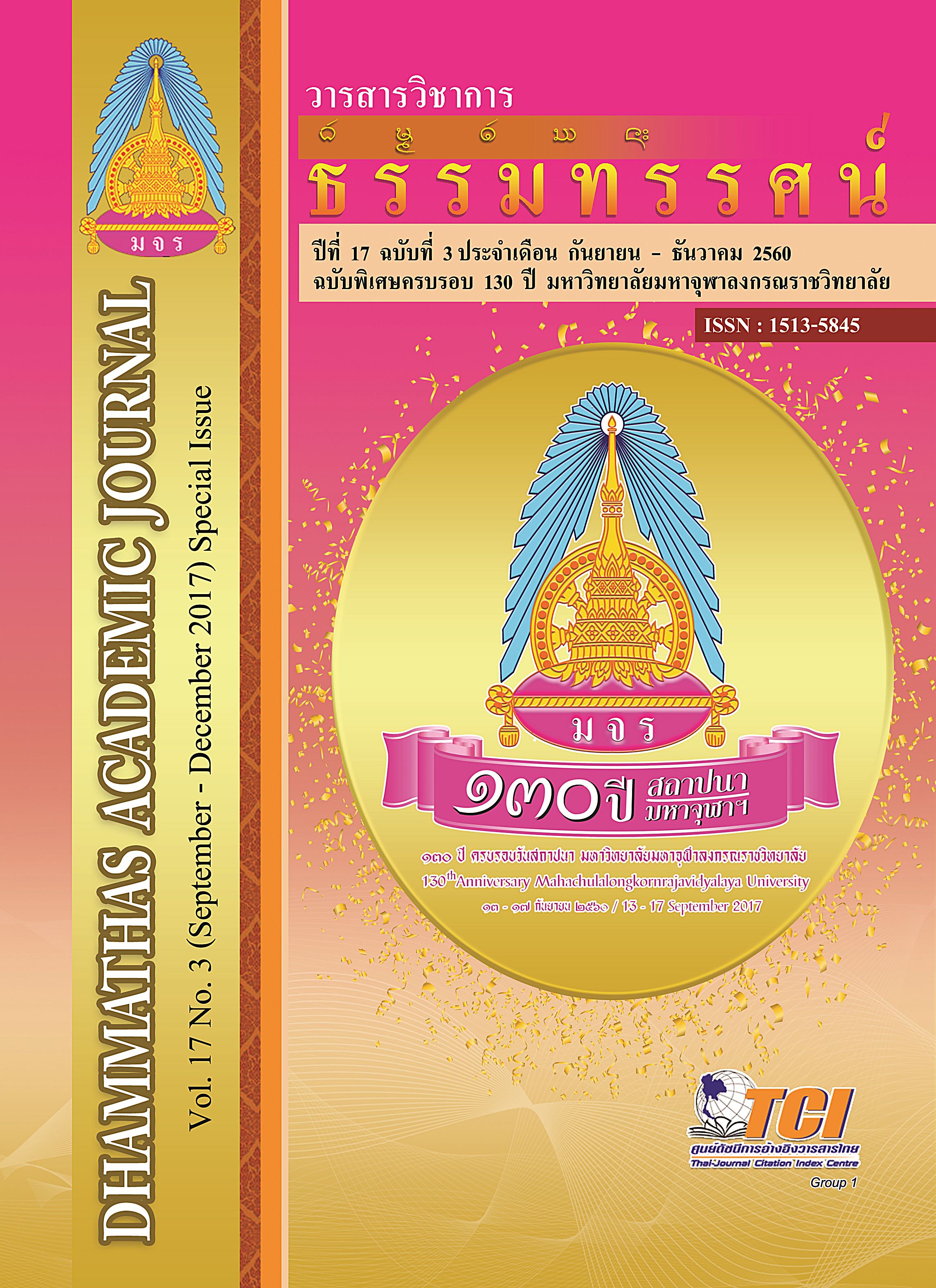A Study of Disease Treatment by Buddhist Chanting in Development Aspect
Main Article Content
Abstract
The objectives of this research were to study the diseases and a way of the The objectives of this research were to study the diseases and a way of the disease treatment in Buddhism and to study the disease treatment by Buddhist chanting in the developmental aspect. It was a qualitative research to collect all data from Tipitaka, academic books and related researches with the descriptive analysis. A result of this study was found that diseases according to Buddhism were divided into two kinds: physical and mental diseases. The former meant sicknesses such as wounds or fever. The latter referred to spiritual illnesses in accordance with defilements (Kilesa) such as diseases from greed (Lobha) to cause suffering that affected directly mental health, anger (Dosa) to cause destruction among human beings, and delusion (Moha) to cause misconception of goodness and badness that affected mental suffering. The development of disease treatment by Buddhist chanting in the Buddha’s age, generally called ‘a ceremony of changing bad fortune into good one’, was found that chanting or listening to sounds of chanting caused the patient’s health because the sounds of chanting or listening to it had great positive effect on his mental health. The development of disease treatment through recent chanting was Bojjhanga Paritta or morning-evening chanting. The disease treatment by Buddhist chanting was a way to growth diligence against happening suffering. As a result, the faced Khamma diseases were cured and this result also brought happiness to mind. The scientific research was fount that the pronunciation of Pali had a powerful atom of Gãthã or trembling of Gãthã to send its energy through all bodily parts and make them self-adjustment through releasing illness and getting good health.

